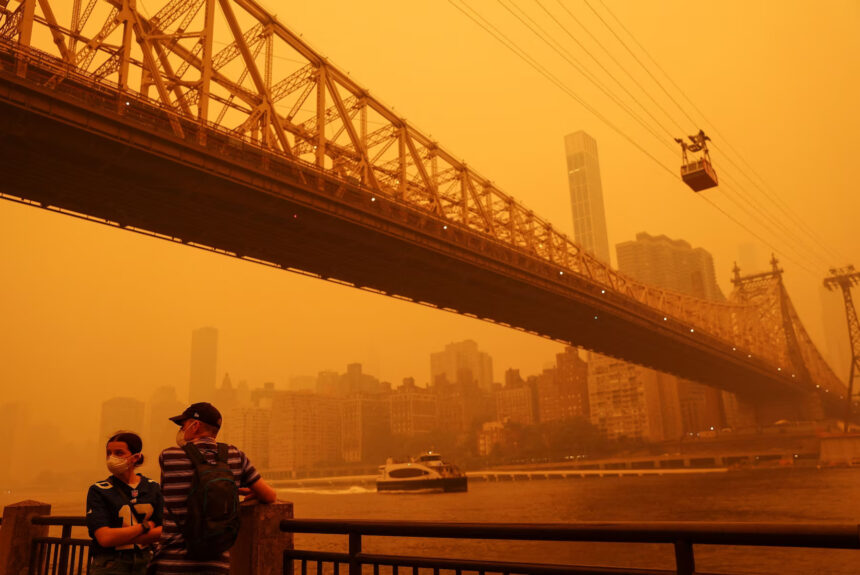Though progress has been made, multiple fires continue to burn throughout Los Angeles, with at least 5,000 structures destroyed or damaged and an estimated $57 billion worth of losses. Families have lost their homes, and mom-and-pop businesses have been destroyed. This wasn’t supposed to happen to urban areas.
Until now, fires have been a problem in areas like the Sierra Nevada mountain ranges, wine countries, conifer forests in the Pacific Northwest, and the chaparral canyons of LA. Yet, this monster has seemingly swallowed up parts of a bustling urban center, burned through the suburbs, and destroyed kindergartens, high schools, banks, churches, temples, and shops.
Experts say it was the result of an intersection of fierce winds and drought influenced, in part, by climate change, the development of houses in fire-prone areas, unfettered housing sprawl into high-risk areas, and the lack of enough rules and enforcement of things like defensible space around homes. Whatever the reasons are, as more catastrophic events hit more suburban and urban areas, the damages will increase, leaving us with no choice but to adapt.
One way Americans everywhere can better prepare for this unfortunate new reality is by adopting a “fire culture” of preparedness that’s so ingrained in country towns. It’s already a way of life for many ranching and farming communities that goes beyond standard emergency plans and drills. It’s ingrained in daily lives, local policies, and community norms.
>>>READ: Understanding Climate Change’s Impact on the Los Angeles Wildfires
When I moved from the city to a countryside town, I learned about this culture the hard way. During our second year in the house, we were evacuated due to nearby fires.
When you go through this experience surrounded by experts, you learn new words like “defensible space” around a home and realize there is a difference between an evacuation warning (which in California means prepare) and an evacuation order (that tells you, go now). You find out there’s a citywide plan of action during high winds, and you should be fully prepared for blackouts. Some towns carefully consider building codes and aggressively coordinate with power companies for safe line maintenance and vegetation clearance.
There’s a focus on better forest management and maybe even grazing. Evacuation orders are rolled out exquisitely organized so that residents have more than enough time to flee. You learn about market-driven inventions like pool pumps that you can purchase or rent monthly to help firefighters when they come to your house.
For a typical city person, seeing 20-story amber flames peeking a few streets up from your neighborhood is terrifying. To ranchers who are well-prepped for fire culture, that’s a sign to start packing your things and getting the animals prepped for exit.
>>>READ: Grazing as a Strategic Fire Prevention Solution
Before long, you start to use words like “perimeter,” which is the boundary marking the outer edge of a wildfire.
Most fire country people know that it’s not just smoke that you’re breathing. It’s particulate matter, chemicals like benzene and formaldehyde, and heavy metals from burning buildings.
When a fire hits, the community is essential. Some fire country people know their neighbors well; they’re a quick text message away to help each other out. Their eyes continuously assess risk when they’re in their yards, and they know that you need to install ember-resistant vents and screen off eaves and decks to prevent flying sparks from entering crawl spaces. Flammable materials, brush piles, downed power lines, or strong winds become bad news, and the neighborhood gets nervous.
There’s always 20 feet of space between homes and the nearest bush or tree because embers can easily jump. When fire is close, common knowledge says to immediately move flammable furniture far away from the house, get rid of flammable liquid in the garage, get rid of dead brush, and get the cars out of the driveway because they can turn into a 1,000-degree destruction machine against the house. Fire culture is no joke.
Cities often rely on a patchwork of warning systems, each managed by different levels of government (city, county, and state), which may confuse residents. The overwhelming intensity and spread of the fire could make it hard for the public to understand the urgency of the warning. Important research and technological innovations are underway that seek to make it easier to prepare for city-wide disasters. For example, Oklahoma State University Stillwater uses a complex alert system to keep athletes, students and audiences safe from severe weather and other impending disasters. Other new technologies, like pinpoint geo-targeting, real-time data collection with AI analysis, and machine learning for flood prediction, aim to reduce blanket messaging in favor of focused, actionable alerts.
What’s more, by lowering administrative barriers, fostering public-private partnerships, and actively engaging the public, local governments can make it simpler for us to manage forests, encourage grazing programs, and help residents harden their homes.
It’s clear that wildfires no longer obey the boundaries of remote canyons or distant forests. They’re coming for your suburbs, city blocks, shopping centers, places once thought untouchable. The only way forward is to cultivate a shared “fire culture,” one that accepts new realities and takes bold measures to protect what we hold dear – institutional, community-wide, and personal. You can’t change the climate or the fierce winds, but you can be as prepared as possible by learning from those already prepared for when the fire comes to your neighborhood.
The views and opinions expressed are those of the author’s and do not necessarily reflect the official policy or position of C3.
